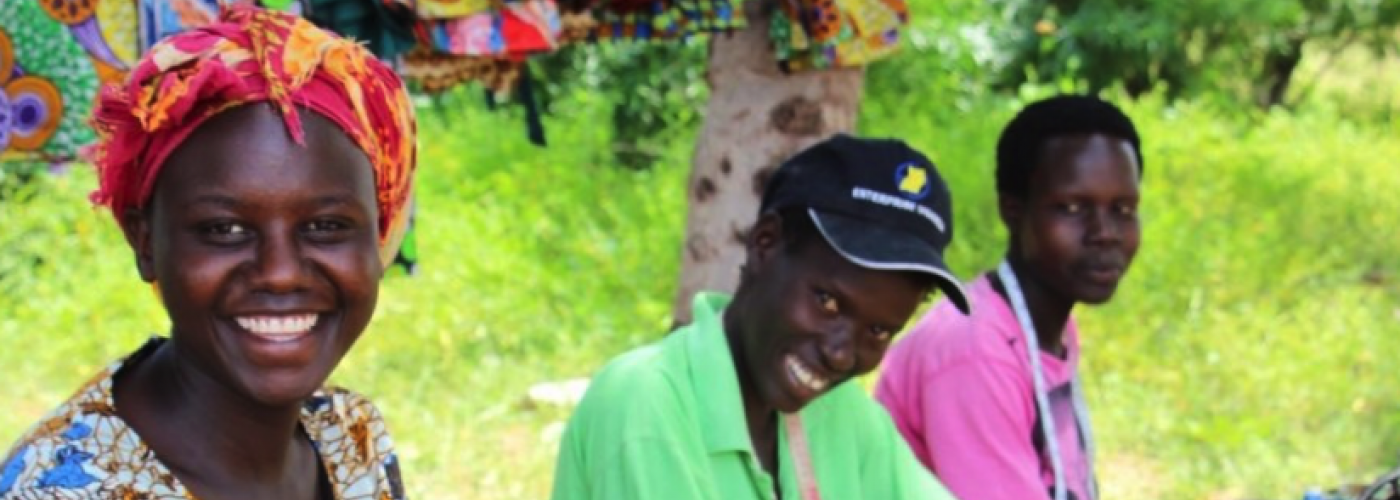Payment for Results: Driving Impact with Adaptive Management
Image

In August, Marketlinks is focusing on the Pay-for-Results model in global development.
Village Enterprise works to end extreme poverty in rural Africa by providing groups of three entrepreneurs with seed capital, training, ongoing mentoring, and support for the formation of Business Savings Groups. We are currently implementing a USD 5.32 million Payment-for-Results project in the form of a Development Impact Bond (DIB). This DIB has bi-lateral outcomes funding from both USAID and DFID and it’s the first DIB for poverty alleviation in Sub-Saharan Africa. Ambitions are to scale this effort into a USD 50 million poverty alleviation outcomes fund with multiple transactions and service providers.
Our first external RCT completed in 2017 proved the positive impact of our program.. However, a PfR type of contract incentivizes us to strive for higher impact because that will lead to higher payment. We received pre-financing from impact investors and want to be able to repay the capital in entirety and also deliver a return on investment. Our goal is 12-15% increased impact compared to our first RCT.
To increase our impact, we decided it was essential to improve our adaptive management (AM) capacities. We placed particular emphasis on addressing how we could best optimize and leverage our monitoring and evaluation systems for adaptive management. The process was participatory, time-consuming and highly rewarding.
Here are the steps in our journey:
- Step 1: Through a dynamic discussion series we defined our organizational theory of change more granularly
- Step 2: We defined the instances in our change framework that were key to success and that require tracking from the M&E team. We also defined the corresponding performance indicators and attributes. We repeatedly reminded ourselves that to ensure the delivery of high-quality and timely data, we needed a lean system. To throttle ourselves from identifying everything as a need, we repeatedly asked ourselves what performance insights from the M&E team would be actionable for staff and managers.
- Step 3: We compared what we had defined in these workshops to our current M&E systems and outlined plans for operationalizing any needed transitions and pilots.
- Step 4: Piloting was key. During the discussions, promising ideas were generated. For example, we noted the need to increase monitoring of the health of the businesses our program participants start. Since our business mentors coach the business groups every month, we first sought to take advantage of that touch point for monthly collection of data against a few key indicators. From the pilot, we learned that such an approach disrupts the flow of mentoring and data quality was also a concern. So we pivoted and decided to use our enumerators to do the data collection. While we don’t have the resources to send enumerators for monthly data collection, this new plan still represented an increase in instances of M&E business health monitoring from 1 or 2 visits per business group in our original M&E framework to 3 monitoring visits per business group in our new M&E Framework. The increased number of visits was partially offset by decreasing the number of questions asked on the business survey and other surveys.
- Step 5: In a parallel activity, we also developed feedback loops. We became obsessed with solving how we would orchestrate timely sharing of relevant data across all staff. We needed a winning process for ongoing sharing of information with our business mentors and their supervisors who are not at computers in the office every day, but rather spend most of their working days with the populations we serve in low or no-connectivity areas. We also recognized the limitation on M&E team bandwidth to process data quickly and on an ongoing basis. We were able to address these challenges within the systems we already use. We use the TaroWorks offline mobile field service app and android devices for data collection and the Salesforce CRM and cloud database for data management. We went through a period of updating our database schema and populating it with automations to combine, transform and analyze data. By doing this, we removed the bottle-neck of waiting for M&E staff to process data while also freeing up more M&E time to focus on the quality of the data going into the system. We purchased tablets for our field staff and gave all field staff and managers access to customized dashboards and reports that detail progress on key performance indicators across business groups, business savings groups, training and targeting.
While technology is important, we recognized it is not sufficient to create a strong culture of performance. Leaders across Village Enterprise invest energy in creating a culture that manages adaptively based on evidence. Insight and reflection have been integrated into a wide variety of meetings across Village Enterprise.
In one of the field offices staff now say, “This is our thing”, in reference to using the data to drive impact. We’ve seen staff use the data in many different ways. To name a few, business mentors use their dashboards to make their case management plans, the country directors use the statistics to inform meeting agendas, and the COO has used the red, yellow, and green business categorizations to organize field visits to better understand the drivers of success or struggle. We’re seeing more staff hitting their activity targets more frequently and anecdotally we’re seeing improved outcomes. Our success increasing the income of our participant populations will be rigorously evaluated via the external DIB RCT in 2020 and 2021. Until then, we will keep innovating and improving for impact.

